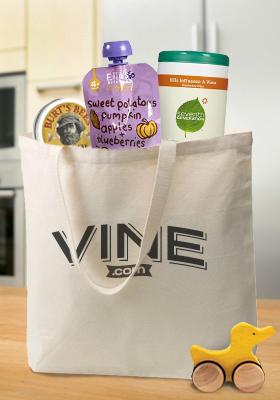Plastics have BPA, metal doesn't microwave, glass gets scratched in the dishwasher, so many people prefer ceramics for food serving & storage. But since lead is used in many ceramic glazes, there are a few things you should know before using ceramics for all of your food meal needs.
The following are suggestions from the FDA website.
Q. What is lead and how do I become exposed to it?A. Lead is a toxic substance present in our environment in small amounts and everyone is exposed to some lead from daily actions such as inhaling dust, eating food, or drinking water. In general, the small exposure to lead within the U.S. population does not pose a significant public health concern. However, exposure to larger amounts of lead can cause lead poisoning.
Q. What health risks are associated with lead poisoning? A. While lead can affect nearly every bodily system, its effects depend upon the amount and duration of lead exposure and age. Exposure to extremely high amounts of lead may result in overt and possibly severe symptoms for which an individual is likely to seek medical attention. However, infants, young children and the developing fetus can be affected by chronic exposure to amounts of lead that may not result in obvious symptoms of lead poisoning. A child with lead poisoning may not look or act sick. If your child has been eating or drinking from pottery or any other type of ceramic ware identified as “problem types” in the list below, and you’re not sure whether it contains lead, stop using the items, and talk to your healthcare professional about testing your child’s blood for lead. It’s a simple test.
Lead poisoning in children has been linked to:
- learning disabilities
- developmental delays
- lower IQ scores
Q. Why is lead used in ceramicware?A. Traditional pottery and other forms of ceramicware are made with earthenware, a porous form of clay which must be glazed in order for the pottery to hold food or liquid. Glazing applies and fuses a thin, glass-like coating onto the surface of the clay to seal its pores. The glaze – which may contain lead to facilitate the melting of glaze particles – fuses to the pottery when it is fired in a kiln, a special oven used to bake clay. When the pottery is fired at the proper temperature for the proper amount of time, essentially all the lead is bound into the glaze. If any migrates to food, it will be an insignificant amount. However, if not properly fired, the lead may not fuse to the earthenware and may contaminate food when the pottery is used with food.
Today many potters of traditional or ‘folk’ pottery have switched to non-lead glazes, but they may still be using old kilns that were once used for firing lead-containing glazes, unintentionally contaminating the “lead free” pottery with lead residues that remain in the kiln from past usage. Because the lead may not fuse into the non-lead glaze, it may contaminate food when the pottery is used with food.
Q. Are there any laws against selling ceramicware that contains lead?A. If the ceramicware contains lead and is properly made, it can be sold in the U.S.
The FDA recently published guidance that addresses the safety and labeling concerns for traditional pottery and ornamental ceramicware that may contain lead that can contaminate food. The guidance is entitled “ (1) The Safety of Imported Traditional Pottery Intended for Use with Food and the Use of the Term “Lead Free” in the Labeling of Pottery; and (2) Proper Identification of Ornamental and Decorative Ceramicware.”
handmade with a crude appearance or irregular shape
antique
damaged or excessively worn
purchased from flea markets or street vendors or if you are unable to determine whether the pottery is from a reliable manufacturer
- brightly decorated in orange, red, or yellow color, as lead is often used with these pigments to increase their intensity.
Pottery not listed above that was made in commercial factories for everyday use is much less likely to have problems related to lead.
- Test the pottery. Consumers can buy lead-testing kits in hardware stores or online. The kits contain swabs with instructions on proper use of the swabs and reading of the results. In most cases, the consumer will rub the swab on the food-contacting surface of the pottery. In most kits, if the pottery contains lead that leaches onto the swab, it will change colors. If a consumer performs a test and finds the pottery contains leachable lead, the FDA strongly advises against using the pottery for cooking, serving, or storing food or drinks.
- If you are unable to test the pottery or otherwise determine that it is from a reliable manufacturer, consider not using it for cooking, serving, or storing food or drinks.
- Look for a warning label. If the pottery was manufactured for use only as a decorative item, it may have a warning stamped onto the clay bottom such as “Not for Food Use—May Poison Food.” Do not use items with this type of warning for cooking, serving, or storing food or drinks.
- Be aware that no amount of washing, boiling, or other process can remove lead from pottery.










.PNG)









